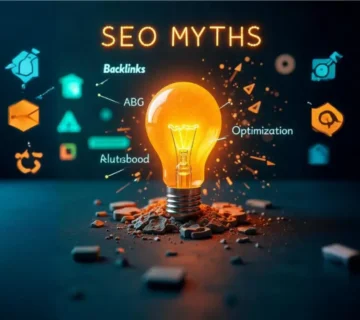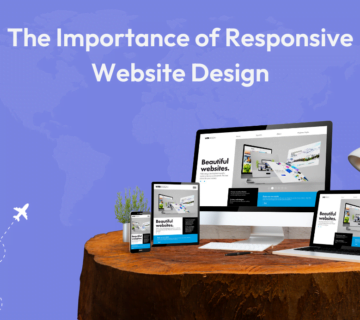SEO vs. SEM : Which Strategy is Right for Your Business?
SEO vs. SEM Confused about choosing what for your business? Learn the differences, benefits, and ideal use cases for each strategy help you achieve your goals.
In the ever-evolving digital landscape, businesses strive to enhance their online presence and attract more customers. Two fundamental strategies dominate the conversation: SEO (Search Engine Optimization) and SEM (Search Engine Marketing). But which one is right for your business? Understanding the differences, benefits, and appropriate use cases for each can significantly impact your marketing success.
Did you know? According to Statista, businesses worldwide are expected to spend over $80 billion on SEM in 2024. This highlights the critical role both SEO and SEM play in digital marketing strategies.
In this guide, we’ll explore the nuances of SEO and SEM, helping you determine which strategy aligns best with your business goals and budget.
What is SEO?
Search Engine Optimization (SEO) is the practice of optimizing your website to improve its visibility on search engine results pages (SERPs) organically, without paying for placement.
Key Components of SEO
- On-Page SEO: Involves optimizing individual web pages to rank higher. This includes keyword optimization, meta tags, content quality, and internal linking.
- Off-Page SEO: Focuses on increasing the authority of your domain through backlinks from reputable sites, social media marketing, and influencer outreach.
- Technical SEO: Ensures that your website meets the technical requirements of search engines. This includes site speed, mobile-friendliness, indexing, and crawlability.
Benefits of SEO
- Long-Term Traffic: Once your site ranks high, it can consistently attract traffic without ongoing costs.
- Cost-Effectiveness: Unlike paid advertising, organic traffic is free, making SEO a cost-efficient strategy in the long run.
- Credibility and Trust: High-ranking websites are perceived as more trustworthy by users.
- Better User Experience: SEO practices often enhance the overall user experience, leading to higher engagement and lower bounce rates.
Use Cases for SEO
SEO is ideal for businesses seeking sustainable growth and organic reach. Whether you’re a local restaurant or an e-commerce giant, SEO can help you attract relevant traffic and convert visitors into customers.
What is SEM?
Search Engine Marketing (SEM) refers to paid strategies aimed at increasing your website’s visibility on SERPs. The most common form of SEM is Pay-Per-Click (PPC) advertising, where businesses pay for their ads to appear alongside search results.
Key Components of SEM
- Pay-Per-Click (PPC) Advertising: Advertisers pay each time a user clicks on their ad. Platforms like Google Ads and Bing Ads are popular for PPC campaigns.
- Display Ads: Visual advertisements that appear on websites, apps, or social media platforms.
- Remarketing: Targeting users who have previously visited your website, encouraging them to return and convert.
Benefits of SEM
- Immediate Visibility: SEM provides instant results, making your website visible on the first page of search results quickly.
- Targeted Advertising: Allows precise targeting based on demographics, location, interests, and behaviors.
- Measurable ROI: Comprehensive analytics help track the performance of your campaigns and optimize them for better returns.
- Flexibility: SEM campaigns can be adjusted in real-time based on performance metrics and changing business needs.
Use Cases for SEM
SEM is suitable for businesses needing quick results, launching new products, or targeting specific demographics. It’s especially beneficial for time-sensitive promotions and competitive markets where immediate visibility is crucial.
SEO vs. SEM: Key Differences
Cost Structure
- SEO: Primarily involves time and resources invested in optimizing your website. While some costs are associated with tools and services, there are no direct fees for rankings.
- SEM: Requires a budget for advertising. Costs vary based on keywords, competition, and campaign settings, with payment typically based on clicks or impressions.
Time to Results
- SEO: A long-term strategy. It can take several months to see significant improvements in rankings and traffic.
- SEM: Provides immediate results. Ads can appear on SERPs as soon as your campaign goes live.
Sustainability
- SEO: Offers sustainable traffic growth. Once established, maintaining rankings requires ongoing effort but continues to deliver results over time.
- SEM: Traffic stops when the ad budget is exhausted. It requires continuous investment to sustain visibility and traffic.
Targeting and Control
- SEO: Limited control over exact placements, as rankings depend on search engine algorithms and competition.
- SEM: High level of control over ad placements, targeting criteria, and budget, allowing for precise audience targeting.
When to Use SEO vs. SEM
Business Goals Alignment
- Use SEO: If your goal is to build a strong online presence, establish authority, and attract organic traffic over time.
- Use SEM: If you need immediate visibility, quick lead generation, or have specific short-term marketing objectives.
Budget Considerations
- Use SEO: If you have limited ongoing marketing budgets and prefer a cost-effective, long-term strategy.
- Use SEM: If you have the budget for ongoing advertising and need rapid results to achieve your business goals.
Market Competition
- Use SEO: In less competitive niches where organic rankings can be achieved more easily.
- Use SEM: In highly competitive markets where achieving top organic rankings is challenging and immediate visibility is necessary.
Resource Availability
- Use SEO: If you have the time and expertise to invest in optimizing your website and creating quality content.
- Use SEM: If you have the resources to manage and optimize paid campaigns effectively.
Integrating SEO and SEM for Maximum Impact
Synergy Benefits
Combining SEO and SEM can enhance your overall digital marketing strategy. While SEO builds a strong foundation for organic growth, SEM can drive immediate traffic and complement your SEO efforts.
Case Studies
Example: A local bakery used SEO to optimize their website for local search terms, increasing organic traffic by 40% over six months. Simultaneously, they ran SEM campaigns for special promotions, resulting in a 25% increase in sales during peak seasons.
Best Practices for Integration
- Keyword Alignment: Use SEM to target high-value keywords and gather data on their performance, which can inform your SEO strategy.
- Remarketing: Use SEM to retarget visitors who came through organic search but didn’t convert, increasing overall conversions.
- Consistent Messaging: Ensure your branding and messaging are consistent across both SEO and SEM efforts for a unified customer experience.
Tools and Resources
SEO Tools
SEM Tools
Learning Resources
Call to Action
Ready to optimize your digital marketing strategy? Whether you’re leaning towards SEO, SEM, or a combination of both, our experts at TryAngletech are here to help.
- Free Consultation: Contact us today for a personalized consultation to determine the best strategy for your business.
- Download Our Free Guide: Get our comprehensive SEO vs. SEM Comparison Guide to make an informed decision.
- Subscribe to Our Newsletter: Stay updated with the latest digital marketing trends and tips by subscribing to our newsletter.
Conclusion
Choosing between SEO and SEM depends on your business goals, budget, and the competitive landscape. SEO offers sustainable growth and credibility, while SEM provides immediate visibility and targeted results. Often, the most effective strategy is a harmonious blend of both, leveraging the strengths of each to maximize your online presence and drive business growth.
Start optimizing your digital marketing strategy today and watch your business thrive in the competitive online marketplace!







